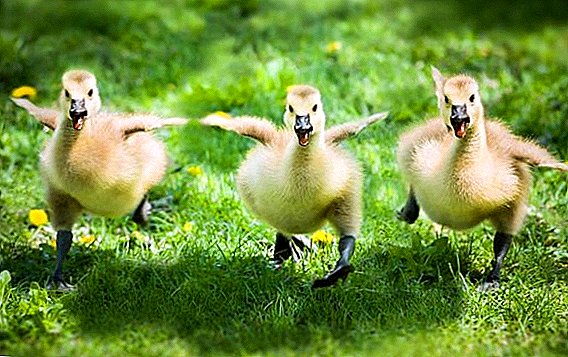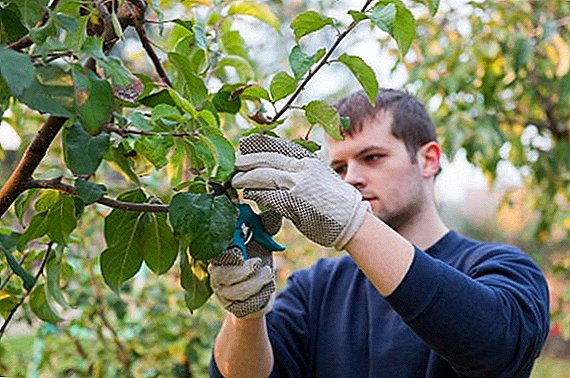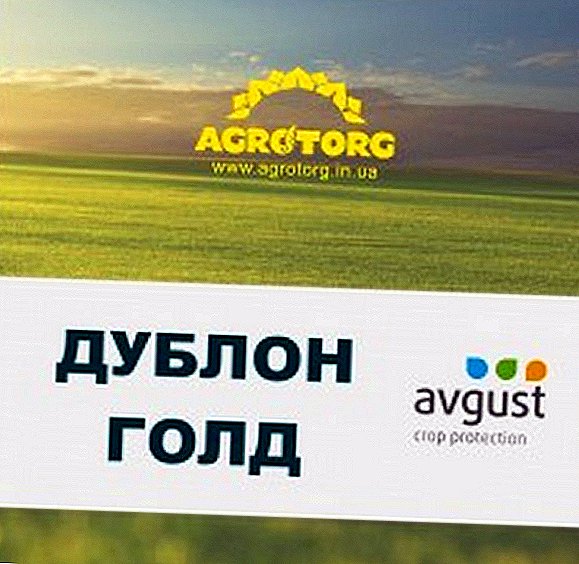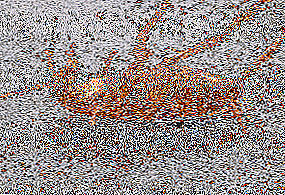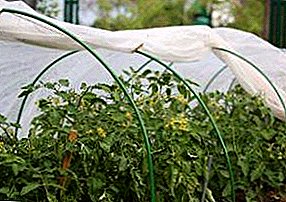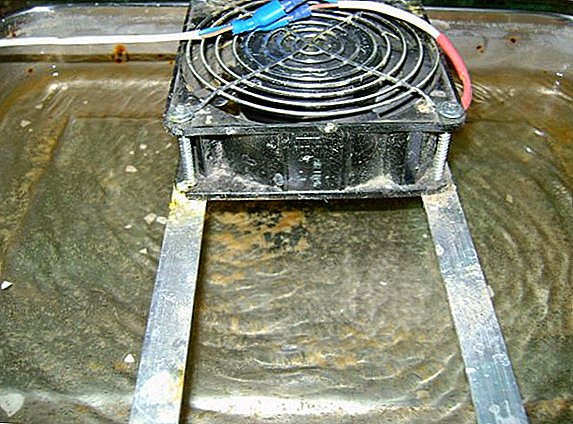 To get full-fledged chicks at home, the poultry farmer needs not only to ensure the desired temperature, but also to constantly control moisture. After all, for chicken offspring in an incubator is one of the most important components of a comfortable environment. Very often the cause of the death of the embryo is precisely the inconsistency of the humidity index to the norm.
To get full-fledged chicks at home, the poultry farmer needs not only to ensure the desired temperature, but also to constantly control moisture. After all, for chicken offspring in an incubator is one of the most important components of a comfortable environment. Very often the cause of the death of the embryo is precisely the inconsistency of the humidity index to the norm.
What are the rates of humidity in the incubator?
To ensure the embryo the proper development in the egg, initially you need to take care of the level of moisture in the device. Due to the good relationship of this indicator with heat, a favorable environment for incubation arises. According to experts, the huge and most common mistake of the pipelines is a one-time access to the desired humidity and its further support throughout the incubation period. In fact, the requirements for the percentage of moisture change as the fetus develops. Consider them in more detail at each stage. 
Did you know? Incubators entered the life of mankind thanks to the ancient Egyptians. It was they, about one and a half thousand years BC, built special furnaces and warmed barrels for artificial incubation of eggs, which was held under the control of local priests.
At the beginning of the incubation
The first days of the eggs in the incubator are very responsible. A low coefficient of air humidity can disrupt the transformation of soluble substances in the protein-yolk mass, which in turn leads to starvation of the embryo. Therefore, at this time the maximum moisture is important.
In the middle of incubation
Starting from the 7th day of incubation, when the vascular grid is formed inside the egg, the humidity should be reduced. The need for abundant evaporation of water is eliminated due to the presence of allantoic fluid. Consider that with a humidity index of 70%, the internal processes of embryo development slow down significantly, therefore it is optimal to set the regulator to 50-65%. According to experts, this period lasts until the 16th day and is characterized by intensive growth of the fetus. 
Chicks hatching
Starting from the 17th day of the eggs in the incubator, increased dampness in the apparatus is contraindicated, since in such an environment pathogens and bacteria develop intensively. In addition, due to the excessive vacuum moisture that occurs in the egg during protein evaporation, the chick cannot cope with the shell, and as a result dies. To normalize all the important factors in the environment, it is recommended at this stage to increase the humidity to 60-70%.
Did you know? In Europe, the author of the first incubator is the Italian physicist Port, which in XVIII century built a primitive structure for incubating chickens. But the world did not know about the grand invention, due to the fact that it was burned by order of the Inquisition. The next to speak about the incubation of eggs were the French, led by the inventor Reaumur.
What are the signs of high humidity?
Many novices think that breeding chickens in an incubator is a very cumbersome and troublesome job, especially due to moisture control. But experienced poultry farmers know that these indicators can be determined even with the naked eye. 
The fact that the humidity in the environment exceeds the recommended standards, indicate:
- abundant adhesive substance that thickly wraps the fetus and shell on the hatch;
- late and non-synchronous gluing, as well as a magnifying glass;
- the appearance of amniotic fluid from a nested egg, which, as it flows out, freezes and prevents the chick from getting out of the shell.
Learn how to choose the right incubator for your home.
How to measure humidity in an incubator
It is easy to control the factors affecting these nuances in purchased incubators equipped with special measuring instruments - hygrometers and thermo-hygrometers. In some models of devices they are provided in the form of additional components. Note that in most commercial meters, the humidity level varies from 40 to 80%.
Important! If the chicks early peck at the shell, but hatch long and out of sync, and the brood is distinguished by little activity, this is a sign that moisture is low in the incubator.
How to measure humidity without special device
If you have a homemade or the easiest purchased incubator, and there are no measuring instruments in the farm, the popular method will come to the rescue. To implement it, you will need fresh water and a clean shred of cloth or cotton wool. For example, in the common construction "Laying", the measurement of the level of moisture in the air is carried out with the help of two ordinary thermometers (thermometers). 
For this you need:
- Fill the bottom tray with water.
- Turn on the incubator.
- After some time work (about 10 minutes) turn it off.
- Wrap a measuring tip of a thermometer with a cotton wool and dip it in water.
- Place both thermometers in the device, placing them side by side, on the same level.
- Turn on the device again and take readings in 15-20 minutes.
| Temperature on a dry thermometer | Temperature by moistened thermometer | ||||||||||
| 25 | 26 | 27 | 28 | 29 | 30 | 31 | 32 | 33 | 34 | ||
| Moisture percentage | |||||||||||
| 36 | 38 | 43 | 48 | 53 | 58 | 63 | 68 | 74 | 79 | 86 | |
| 36,5 | 37 | 41 | 46 | 51 | 56 | 61 | 66 | 71 | 76 | 83 | |
| 37 | 35 | 40 | 44 | 49 | 54 | 58 | 63 | 68 | 74 | 80 | |
| 37,5 | 34 | 38 | 42 | 47 | 52 | 56 | 61 | 66 | 71 | 77 | |
| 38 | 32 | 36 | 41 | 45 | 50 | 54 | 59 | 64 | 68 | 74 | |
| 38,5 | 31 | 35 | 39 | 43 | 48 | 52 | 57 | 61 | 66 | 72 | |
Did you know? Chinese incubators have always been significantly different from those invented by Europeans. In ancient times, in this country, it was customary to build such structures in the ground and to heat them with the help of the sun. Hatching eggs by special people was also practiced.
How to adjust the level
Since dry air is unacceptable when incubating young offspring, the poultry farmer must promptly increase or decrease the level of moisture. In the latest generation of devices, these processes occur without human intervention, but home-made and simple purchased models of incubators require special participation. Consider the possible options.
Semi-automatic and automatic purchasing devices
Without exaggeration, such devices - the dream of every poultry farmer. They are equipped with temperature and humidity controllers, independently turning over trays with eggs for uniform heating.  Automatic models generally do not provide any actions of the owner. His role is only to load what is needed to hatch chickens. And the rest of the car will handle itself. In addition, she can take half a thousand eggs at the same time. The only drawback is the high cost, starting from 40 thousand rubles.
Automatic models generally do not provide any actions of the owner. His role is only to load what is needed to hatch chickens. And the rest of the car will handle itself. In addition, she can take half a thousand eggs at the same time. The only drawback is the high cost, starting from 40 thousand rubles.
Read about the intricacies of incubating eggs of chickens, goslings, poults, ducks, turkeys, quails.
For their own needs, such turnovers are not needed. Therefore, it is quite possible to do with automatic couves, which cost half as much and lose only in their spaciousness. For example, from the series of automatic incubators, the following models have proven themselves well:
- MS-48 (the device is designed for 48 eggs);

- MS-98 (tray holds 98 eggs);
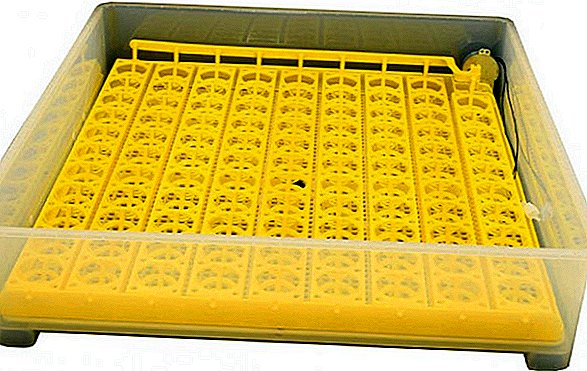
- Covina Super-24 (Italian brand River).
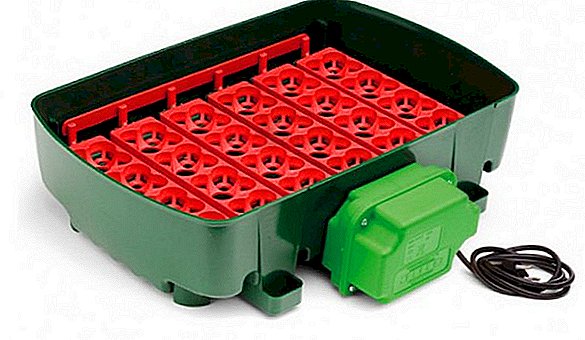
 Covina Super-24
Covina Super-24Users respond well to the following models:
- Argis (Romanian production, with a capacity of 56 eggs, equipped with an electronic thermostat and a fan for forced blowing);

- ASEL IO-1P TE (it is calculated on 56 eggs, assumes compulsory air exchange, the electric control of temperature condition and mechanical revolution of egg trays).
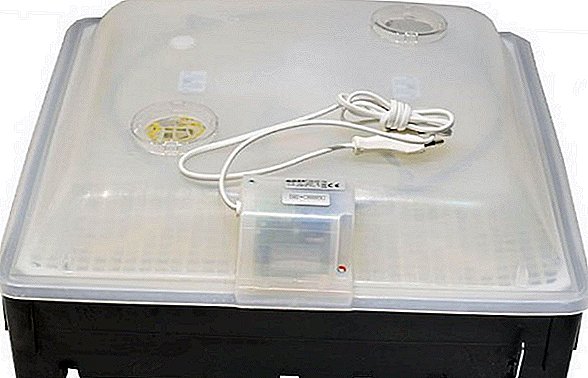
It will be interesting to know how to make the incubator device out of the fridge yourself.
Forced Moisture Techniques
If the humidity is low, additional measures may be required. To enhance it, use such devices:
- Special bath and heater (tubular electric heater). There is a constant heating of the water, causing it to evaporate. Such a device can be made from any metal vessel itself, having built a 200 W heater in it. It is important that the design is located inside the incubator directly under the egg trays.
- Injection pump. This technique involves moistening through the upper sphere with a pump and a nozzle. Liquid is collected from any container and goes to the entire surface of the incubator. But for the uniformity of sprinkling such a structure should be installed at a distance of 20 cm from the eggs.
- Using a commercially available ultrasonic humidifier. Farmers are popular models "AC100-240V", "Fog Maker Fogger" 16 mm. The purchase of such equipment will cost 500-800 rubles.
Important! In cases of cracks in the shell of one of the eggs that remain in the incubation, wipe the affected area daily with a concentrated solution of potassium permanganate, and “glue” it with a leaf of papyrus moistened in the same solution above.
Video: how to increase humidity in the incubator with your own hands
Forced Moisture Reduction Techniques
Lowering humidity is always more difficult. You can do this manually as follows:
- Lower level on regulators automated incubators. This method must be resorted to only when the programmed mode does not correspond to all eggs. Although modern models of devices of this type independently regulate the necessary indices, there is often a difference in the development of embryos.
- To lower the level of liquid in the bath, which is included in the design of the incubator. This work can be performed only when the device is de-energized.
- Temporarily remove the water tank from the machine. This is done only when the moisture level rises to maximum levels (80%). But it is impossible to leave eggs in such a state for a long time. If you can not remove the bath, the water is completely pumped out.
- Place in the incubator absorbing the improvised means: washcloth, cotton wool, cotton fabric, rags. This method allows you to solve the problem within half an hour.
- Use the purchased regulator "ВРД-1", "РВ-16 / П". Such a purchase will cost about 1000-3000 rubles.

How to make a "device" moisture control
If your electric connection is a simple self-made invention, do not be in a hurry to get upset that it is inferior to new expensive devices. Some of their functions you can make at home - for example, a humidity regulator. There are various options from which you can choose the one you like for a particular design:
- It is possible to equip an incubator with a water tank. This method is great for large devices and absolutely not beneficial for small ones. The fact is that when the water level drops, the machine can fail. In addition, the costs of electricity supply are high.
- For smaller constructions, a device made of an electric valve and ordinary fabric, onto which excess water drips, is suitable. The disadvantage of this method is the need for frequent replacement of the tissue element, since calcium deposits accumulate on it already after a week and a half.
- Alternatively, an aquarium air compressor is suitable. For the device to work, you need to provide a capacious tank of water and for reliability of at least 5 sprayers.
Important! Even in the event of an unexpected de-energization or breakdown of the apparatus, do not allow an abrupt halt of incubation. Remember that embryos can safely transfer daily cooling or overheating. It is not desirable, but it is permissible to keep the eggs at 49 ° C for 1 hour. If this figure is lower, the embryo will retain its viability for 3 hours.
Whichever incubator you use, the control of moisture and temperature are the main interrelated factors on which young offspring depend. Therefore, you need to decide in advance how you will adjust the required indicators, and what is required for this.







